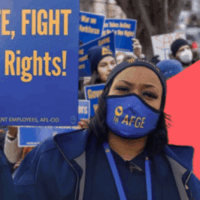Final Rule Lets Bosses Outsource Responsibility for Workers
Washington, DC—The following is a statement from Rebecca Dixon, executive director of the National Employment Law Project, in response to the National Labor Relations Board’s final rule, announced today, rolling back “joint employer” protections for workers:
“When a company calls the shots at a workplace, it should be responsible to the people who work there—no matter if the company obtained those workers by contracting out to a staffing firm or other labor subcontractor.
“Too many employers, however, use temp agencies and subcontractors to try to duck responsibility for workplace violations and to squelch worker organizing and collective action for mutual aid and protection. That’s why, for well over a century, the law has recognized the idea of joint employment: if a company retains control over the essential terms and conditions of the work, it should share responsibility for the workers.
“That important principle has now been eviscerated by the Trump NLRB’s final rule on joint employment. The result is that outsourcing employers will more easily evade responsibility for the working conditions in their businesses. The NLRB’s rule will also make it harder for workers to organize and negotiate working conditions with joint employers.
“The rule will increase the outsourcing of jobs by companies seeking to avoid responsibility for their workers. Today, more and more corporations—especially those in lower-wage industries—are using labor intermediaries such as temp and staffing firms. Temp workers—who are disproportionately Black and Latinx—are paid substantially less than permanent workers, have almost non-existent benefits, and face high rates of wage theft. The NLRB’s rule will exacerbate these predatory work conditions, which will disproportionately hurt people of color.
“Black and Latinx workers are overrepresented in subcontracted work with the lowest job quality—temporary help agency work. While Black workers constitute 12.1 percent of the overall workforce, they make up 25.9 percent of temporary help agency workers; Latinx workers are 16.6 percent of all workers, but 25.4 percent of temporary help agency workers.
“Corporations that engage contractors who mistreat workers, and then look the other way or actively avoid bargaining with the workers, gain an unfair advantage over companies that play by the rules. This results in a race to the bottom that rewards cheaters and hurts everyone else—workers, good employers, and consumers. It’s one reason why the quality of what were once good middle-class jobs in America has declined so much.
“The Trump NLRB’s rule ignores Supreme Court authority and conflicts with an on-point D.C. federal appeals court ruling and decades of precedent, substituting a new test that, in the real world, would apply to almost no subcontracted workplaces. It would especially hurt workers employed via temp or staffing agencies, and those who work in heavily contracted sectors, such as janitorial, construction, manufacturing, and warehousing jobs, to name a few.
“In today’s economy, we should be looking for ways to increase workers’ pay and economic security, not lay the groundwork for more sweatshops. With this NLRB rule, with its USDOL joint employer rule, and with its EEOC rulemaking to weaken joint employer accountability for discrimination and harassment, the Trump Administration is repeatedly ignoring the law and rigging the rules in favor of corporations against working people.”
Read NELP’s comments on the NLRB’s proposed rule.
More Resources on Joint Employer:
NELP’s comments on the USDOL’s joint employer rule
Fact Sheet: The NLRB’s Browning-Ferris Decision Explained
Report: Who’s the Boss: Restoring Accountability for Labor Standards in Outsourced Work
Poll: Voters See ‘Contracting Out’ as Serious Problem for America’s Workers and Economy




